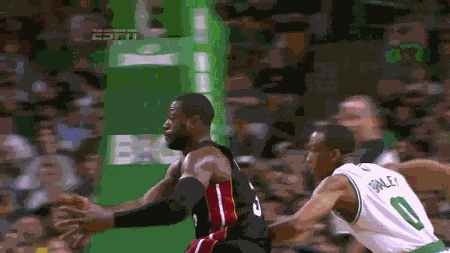The NBA is funding a study on wearable GPS devices to look at outfitting players during games.
We all know the guy that shows up for pick-up with double arm sleeves and a headband. Consciously, every time, we ask ourselves “Is that really necessary?”
A similar question is about to be asked in the NBA.
We’re on the ascent in the data age in professional sports, and the NBA in particular. The League’s plan to place GPS devices into jerseys that will track movement, health and fatigue should come as no surprise. A year ago, Sport VU systems were installed in all 29 arenas that track spatial and physical movements of each of the players as an individual and as a five-man unit. Some of the basic aspects of the data can be found on NBA.com.
For example, Damian Lillard and Andrew Wiggins were the only two players a year ago to move more than 200 miles over the course of the season. Chris Paul led the league in total touches. The system can break down offense easily into a variety of different categories.
The idea of getting more data can only be viewed as a positive by the ones receiving it, right?
As Grantland’s Zach Lowe pointed out on Sept. 17, the players union is worried about ramifications of the copious data finding its way to teams. The technology tracks fatigue and is key in injury prevention — many teams use similar devices in practice already — but if the messages received indicate physical abnormalities of seemingly healthy players, negotiation power on the side of the players is diminished.
The NBA-funded study will specifically target in-game use, and should aim to figure out the limits of what the teams need. It’s still early in the process, as any wearable technological devices would likely not be implemented until 2016-17. Testing the program in the NBA Developmental League over an entire season would give the NBA its best idea over future consideration of sewn-in GPS devices.
Piecing together an NBA roster is already an arduous task, and analytics within the basketball stats themselves have already revolutionized the way teams hire general managers and coaches, draft players, make trades and pursue free agents. Some teams lean more heavily on analytics than others, but every team is buying into its potential at some level.
In 3-5 years we’ll be talking about wearable tech in the same way. With equipment weighing less than an ounce, there is little on-court hindrance in expanding the system. Players are already overlooked in the draft and free agency for a variety of reasons, adding another variable won’t derail the entire player evaluation process.
While the two arm sleeves and headband might be overkill for the pick-up player, expanding the ability to track more aspects of the game will eventually be seen as a positive. Like any change to the game, there will be resistance, but expect to see these devices phased in over the next handful of years.
Add The Sports Daily to your Google News Feed!
